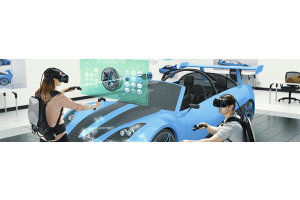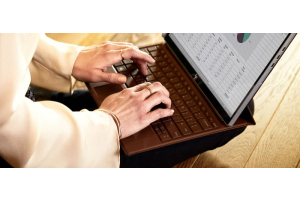We use cookies to offer you a better experience. For more information on how we use cookies you can read our Cookie and Privacy Policy.
How to Delete Apps from Your Windows 10 PC

For one reason or another, you’ve decided that you’re going to delete an app or two from your Windows 10 PC. That shouldn’t be too difficult, right? All you’ve got to do is… delete them.
Actually, one of the biggest questions that PC users ask is, “How do I delete apps from my PC?” Some apps are easy to delete, but others are much more difficult to get rid of, specifically the built-in apps that come included with your Windows 10 operating system.
We can help you evict those applications that aren’t paying rent! Here’s how to delete apps from your PC with Windows 10.
(Be warned: there are Avengers: Endgame spoilers in this blog.)
Here’s why you should delete apps you don’t need
If you’re not asking, “How do I delete apps from my PC?” you might be asking, “Why should I delete apps from my PC?”
That’s a fair question. There are four main reasons why you should delete unneeded apps from your PC:
- To increase your storage space
- To boost your computer’s speed
- To prevent files from getting corrupted
- To keep your PC better organized
1. Increased storage space
If you’ve had your computer for a while, you might be running out of storage space. Over time, you’ve slowly accumulated a large collection of files that consume most of your hard drive space. Or, you just have a ton of computer files - very understandable if you’re a business person or if you’re a creative professional (nothing eats up your storage space faster than photo and editing files). If you’re running into this problem, you can easily clear up some storage space by deleting apps that you don’t use.
2. Increase speed
Even if you’re content with having only a few gigabytes of available storage, your computer might begin to operate at slow speeds. Your computer’s memory (RAM) is principally responsible for computer speed, but your RAM constantly exchanges files with your hard drive in order to run your computer programs.
If you don’t have enough available storage space, your RAM won’t be able to send as many data packets to your hard drive, which means it’ll take longer for your computer to perform tasks. It might not cause any problems when you’re browsing the web, but it could significantly hinder the performance of larger software.
3. Avoid corruption
Another reason why you should delete unneeded apps is that you’ll reduce the likelihood that one of them will get corrupted and cause problems for your computer. When a virus or malware infects one of your files, it can cause a slew of issues that affect your entire PC.
4. Stay organized
And last, but certainly not least, getting rid of unnecessary apps is a simple way to keep your PC organized and free from the dreaded “computer clutter.” It’s difficult to find a single file when there are heaps of files scattered all about your PC. Additionally, computer clutter makes it difficult to create backups if you’re only trying to back up select folders and files. We’d like to think that Marie Kondo has our back on this one.
Caution: Before you delete apps
Before you delete any Windows 10 apps, remember that many Windows 10 apps work in conjunction with one another. If you remove one, you might affect the capabilities of another - one you depend on for your regular computing. If this happens to you, we have a "regrets" section at the end of this tutorial. You can simply reinstall what you need. Also, make sure that all applications are closed before you begin deleting apps.
How to manually delete apps on Windows 10
Here’s how to manually delete apps that are not built-in Windows 10 apps (although you can delete a few built-in apps with this method).
- Open the Start menu
- Click Settings.
- In the Settings menu, click System
- Select the Apps & Features tab
On the right pane, you’ll be given a list of apps that are installed on your PC.
- Select an app you want to delete
- Click the Uninstall button
- Click the Uninstall pop-up button
This method should work for a few built-in apps, too, such as:
- Get Office
- Get Skype
- Get Started
- Microsoft Solitaire Collection
- Money
- News
- Phone Companion
- Sports
It also works for apps that are automatically downloaded by Windows 10, like Candy Crush, Netflix, and Pandora.
How to delete built-in apps on Windows 10 with PowerShell
There are some apps that come pre-installed with your Windows 10 operating system. If you want to delete them, you’ll need to use a Windows tool called PowerShell. PowerShell is a command software that enables you to use scripting language to control many of your operating system features.
It’s an advanced tool that’s used mostly by IT professionals to fix computer problems, but you can use it to delete a few built-in apps. We’ll walk you through the process - it’s not too difficult!
Be aware that there are some critical apps you won’t be able to remove from Windows 10, like Cortana and Microsoft Edge. These apps are deeply ingrained into the Windows 10 functionality.
To delete built-in apps from Windows 10:
- Click Start and enter “PowerShell” into the search box
- Right-click on PowerShell and select Run as administrator
- You’ll have to be logged in as an administrator to use PowerShell in this capacity. You might get a notice that says, “Do you want to allow this app to make changes to your device?” Click Yes.
- Enter the correct commands to delete the apps you don’t want
- Copy and paste one of the commands listed below into PowerShell, and then hit Enter on your keyboard. Once you hit Enter, the app will be automatically deleted
Here’s a list of apps you can delete, with their corresponding commands:
Uninstall 3D Builder
Get-AppxPackage *3dbuilder* | Remove-AppxPackage
Uninstall Alarms and Clock
Get-AppxPackage *windowsalarms* | Remove-AppxPackage
Uninstall Calculator
Get-AppxPackage *windowscalculator* | Remove-AppxPackage
Uninstall Calendar and Mail
Get-AppxPackage *windowscommunicationsapps* | Remove-AppxPackage
Uninstall Camera
Get-AppxPackage *windowscamera* | Remove-AppxPackage
Uninstall Groove Music
Get-AppxPackage *zunemusic* | Remove-AppxPackage
Uninstall Maps
Get-AppxPackage *windowsmaps* | Remove-AppxPackage
Uninstall Movies & TV
Get-AppxPackage *zunevideo* | Remove-AppxPackage
Uninstall OneNote
Get-AppxPackage *onenote* | Remove-AppxPackage
Uninstall People
Get-AppxPackage *people* | Remove-AppxPackage
Uninstall Photos
Get-AppxPackage *photos* | Remove-AppxPackage
Uninstall Store
Get-AppxPackage *windowsstore* | Remove-AppxPackage
Uninstall Voice Recorder
Get-AppxPackage *soundrecorder* | Remove-AppxPackage
Uninstall Weather
Get-AppxPackage *bingweather* | Remove-AppxPackage
Uninstall Xbox
Get-AppxPackage *xboxapp* | Remove-AppxPackage
How to reinstall built-in apps
We all have regrets. Maybe after you hit the Enter key, you felt a deep stabbing pain in your heart and felt an instant disgust about the person you’ve become. If that’s the case, you should know that it’s easy to restore any of the apps that you’ve just deleted.
To restore all your apps, just enter the following command and hit Enter:
Get-AppxPackage -AllUsers| Foreach {Add-AppxPackage -DisableDevelopmentMode -Register “$($_.InstallLocation)\AppXManifest.xml”}
That’s it! Like Iron Man snapping his fingers in his custom-made Infinity Gauntlet, you’ve just restored all life in the universe. (See, I warned you there’d be spoilers…)
Use an external hard drive if you need more storage space
Let’s discuss the storage space issue one more time because it’s an important one. If you’re running out of storage space, you can resolve the issues in a couple of different ways that don’t require you to delete any apps. And besides, many of the apps listed don’t take up a whole lot of your precious storage space.
Use an external hard drive
One of the most effective ways to clear up storage space on your computer is to store files on an external hard drive. External hard drives are storage drives that you can plug into your computer via USB or other adapters. Most external drives have 1TB to 3TB storage capacities and they’re great for storing files that you don’t need to access frequently, like records and photos.
What’s so wonderful about external drives is that they’re portable, so you can take them with you while you’re traveling or even just commuting between home and office. When you store your photos, videos, documents on an external hard drive, you can free up space on your computer for all your apps.
Delete temporary files
A lot of your storage issues might stem from an accumulation of smaller files, like temporary internet files, temporary Windows files, program download files, and cached files. Most of the time, you don’t even know these files are on your computer, and they build up year after year and consume a lot of your storage space.
Thankfully, you don’t need these files and they’re easy to find and delete. You can use a Windows tool called “Free up space” (formerly called Disk Cleanup), which will automatically locate these files and give you the option of deleting them. Read our Disk Cleanup guidefor a more comprehensive how-to.
Get a new computer with a large storage capacity
If you’ve owned your computer for a few years, it might be a good time for you to upgrade to a new HP computer with a higher storage capacity. HP has a large variety of laptops and towers desktops that have huge amounts of storage space, and you can find a variety of budget-friendly laptops, too.
About the Author: Zach Cabading is a contributing writer for HP® Tech Takes. Zach is a content creation specialist based in Southern California, and creates a variety of content for the tech industry.






